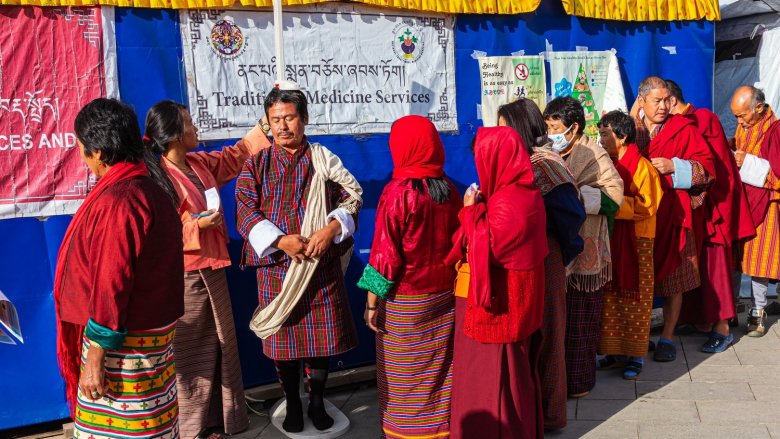Bhutan has gone through four significant outbreaks of COVID-19 since March 2020. The first outbreak occurred in August 2020 (35th epi week), the second in December 2020 (52nd epi week), the third in May 2021 (21st epi week, attributable to the Delta variant), and the ongoing wave since December 2021 on account of the Omicron variant. As of April 9, 2022, over 40,629 persons tested positive for COVID-19 (22,592 males; 18,037 females; and 2,127 children<5 yrs), 31,424 persons have recovered (17,819 males and 13,605 females) and fourteen deaths are reported (6 males and 8 females).
Bhutan has been an exemplar nation in the South-Asia Region in launching a strong health sector emergency response to COVID-19. As soon as the first case was detected in Bhutan in March 2020, surveillance activities were immediately strengthened in all 20 districts with addition of district-based Case Investigation and Contact Tracing (CICT) teams. The IDA financed COVID-19 Emergency Response and Health Systems Preparedness Project in the amount of US$5 million was prepared and expeditiously approved by the Bank’s Board of Executive Directors on April 17, 2020. With the IDA financing, 50 hospitals and 184 primary health centers were provided with testing equipment, RT-PCR and Antigen Test Kits, consumables, hygiene products and PPE. Intensive Care Units were prepared in 4 COVID centers (total of 54 beds) to manage COVID-19 patients needing critical care. Capacities of 5 laboratories for COVID-19 testing were strengthened. Isolation, triage and treatment centers were established in designated hospitals and public health centers. Approximately 45,000 population above 12 years old (6 percent of the population) received primary series Moderna vaccines and another 135,000 population above 18 years old (18 percent of the population) received their booster dose of Moderna vaccine, also financed by IDA. Mass-, mid- and print-media were leveraged to create awareness of public health measures to manage COVID-19 as well as demand for testing, treatment and vaccination services. Over 4,756 awareness campaigns were launched, including a COVID-19 dashboard, video and radio spots, posters, pamphlets, travel advisories and social media campaigns. Hotline 1010 was set up for public service-related information dissemination, Hotline 112 for sharing health related information and advice and Hotline 1414 to address grievances related to health and COVID-19 related services. Trainings of health administrators and workers were conducted in COVID-19 prevention and treatment measures, social and behavior change communication, and to ensure compliance with social and environment safeguards requirements. Supervision visits were conducted to monitor and strengthen the health response to COVID-19, including progress with the minor civil works financed by the project.
With the support of the World Health Organization (WHO), United Nations Children’s Fund (UNICEF), the Global Alliance for Vaccines and Immunizations (Gavi), the World Bank and ADB, Bhutan established one of the world’s most effective vaccination campaigns. As of February 28, 2022, 98.4% of eligible population >12 years of age were provided first dose of COVID-19 vaccine and 94.5% of eligible population >12 years were fully vaccinated. Additionally 88.6% of eligible population >18 years of age received their first booster dose. Bhutan also initiated vaccination of children 5-11 years of age with approved vaccines. As of March 11, 2022, 96.1% of the children 5-11 years were provided the first dose of approved pediatric COVID-19 vaccines.
